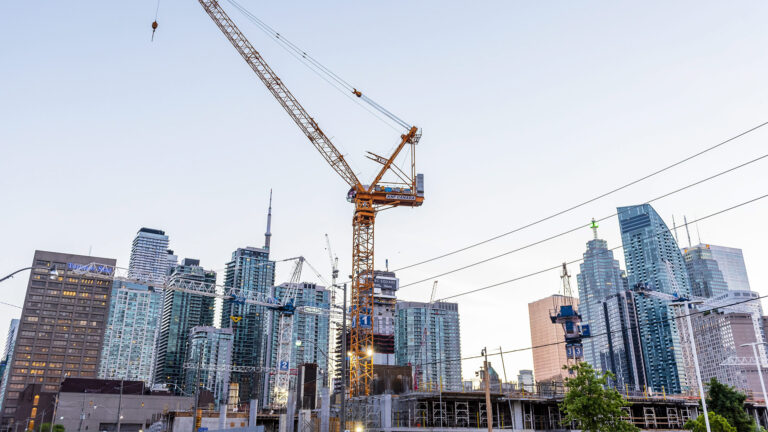The debate about affordability and climate change is stuck. Opponents of carbon taxes and regulations emphasize increased energy prices. Clean energy advocates argue a net-zero emissions future will cost Canadians less yet offer few guarantees to make the transition affordable and fair.
Both sides are missing out on opportunities to engage with energy consumers and deliver affordability in new ways thanks to new sustainable energy and digital technologies.
The energy infrastructures of the 20th century were built alongside an implicit social bargain with customers. Governments and/or private companies would control large, centralized energy generation, and customers would pay low energy prices. Customers were expected to buy cars and electric appliances to help promote supply-side economies of scale. Some places later experimented with energy deregulation, which focused on competition among energy suppliers rather than changing how customers use and produce energy.
A new social bargain
The quest for net-zero emissions requires an entirely new approach. Yet the old social bargain still shapes our politics and policies. Meanwhile, the centralized energy paradigm is breaking down. Large power plants run into cost overruns, whether they use fossil fuels or renewable energy like hydroelectricity. Just focusing on “bigger, cleaner” grids could be prohibitively expensive.
A U.S. study released in August 2023 found that without efficient buildings and active management of when and where energy demand occurs, a zero-carbon grid would cost $100 billion more per year. Building power plants and transmission lines is expensive, whether they are connected to fossil fuel or lower-emission generators.
The study showed that the high costs of energy supply can be avoided by investing in energy savings, storage and decentralized generation in communities, homes, buildings and industries. The Canadian government has not published a similar analysis, despite its aim to achieve net-zero emissions electricity by 2035.
To demonstrate that climate action would be affordable, policymakers need to create a new social bargain with consumers that fits with sustainable energy technologies. The bargain starts with a recognition that the way customers and communities use and produce energy can significantly change Canada’s net-zero emission price tag and change the impact of energy costs on Canadian pocketbooks.
Three new ways to make energy affordable and sustainable
A new social bargain is possible and desirable because sustainable energy technologies and practices can create new ways to deliver affordability.
First, homes and businesses should have easy access to measures that improve energy efficiency, reduce demand and limit greenhouse gas (GHG) emissions. They should also be rewarded for smarter energy consumption because it leads to benefits for everyone by avoiding unnecessary and risky energy generation costs.
Newer technologies, including cold climate heat pumps, carbon sequestering insulation materials and advanced air-sealing techniques make it feasible for households to reduce energy use by 50 per cent and emissions by 80 per cent – and eventually by 100 per cent with zero-carbon electricity and/or fuels.
Once energy consumption drops significantly and energy efficiency improvements start playing the most important role in delivering services like warmth, light and entertainment, paying a rate per unit of consumption might not make much sense anymore. Instead, customers could pay stable fees for energy services and get paid by energy utilities and governments for reducing GHG emissions and avoiding more costly energy generation.
Second, a sustainable energy future means customers could get paid to offer services to electricity grids. As these grids rely on more wind and solar energy, traditional baseload generation becomes less important. The ability to flexibly ramp up and down to match demand with available energy from renewable resources increases in value.
It costs less and is more equitable to achieve this grid flexibility with customers instead of through centralized power plants. Customers can “flex” their demand without any inconvenience. Hot-water tanks can be heated overnight and electric vehicles can be charged during the lowest-cost times for the grid and still be ready for the drive to work. Well-insulated homes are thermal batteries that can pre-heat and pre-cool before extreme weather spikes electricity demand.
Customers flexing their demand provides the same services traditionally offered by power plants or large industries. This creates the opportunity to change the one-way relationship of paying a utility bill to a two-way street where customers also get paid.
Customers would be secure when faced with disruptions caused by extreme weather by generating and storing their own energy. During power outages, homes and communities with solar panels could use batteries to keep the lights on.
Most of the time the batteries would be connected to the grid so electricity system managers could use them to supply energy during demand spikes or to store wind energy. Energy storage would also deliver a cost-effective alternative to transmission lines or natural gas plants.
Customer-oriented policies make climate action affordable
Wind turbines, solar panels, heat pumps and electric vehicles won’t automatically mean security and affordability, especially if policymakers continue to focus on energy generation instead of demand. New policies must set different expectations and encourage customers to advocate for more sustainable solutions.
Affordability starts with making energy efficiency a universal program in a net-zero emissions economy. Instead of customers demanding lower prices, it should be made easy for them to secure lower and stable bills by using less energy.
The federal government can move us closer to this future by making sure all low-income Canadians have access to energy efficiency measures. The only specific, low-income program in Canada is restricted to heat pumps for homes heated with fuel oil, which leaves most households out. This is a technocratic solution instead of a new social bargain in which access is universal and services are tailored to needs.
More from the author: How to mandate clean heat in our buildings
Why green construction is needed to affordably increase housing supply
Another essential step is for regulators to prioritize “demand flexibility” that relies on customers over services provided by centralized energy generators. Regulators should require utilities to pursue all cost-effective energy efficiency and demand flexibility solutions ahead of energy generation. This is a policy change within provincial jurisdiction, yet the federal government could make it a condition for access to federal net-zero emission electricity funding.
Appliance standards should mandate “smart” hot-water tanks and other home equipment that allow customers to make money by timing their energy demand. This is particularly important in lower-income households that often face the highest energy burdens. Customers should be able to expect payments from their utilities whenever they purchase an electric vehicle, hot-water tank or heat pump.
Finally, a new social bargain should provide a safety net against unreasonable energy costs through universal service programs that issue credits if bills are too high relative to household income. Homes that need such support could be first in line for energy retrofits to reduce bills and the cost of assistance.
A net-zero emissions future that creates more opportunities for affordability, security and customer participation is possible. A new social bargain can be based on stable bills, climate resilience, payments to good grid citizens and a safety net against energy poverty. But first it is necessary to break out of the supply-side habits inherited from our centralized and unsustainable energy past.









